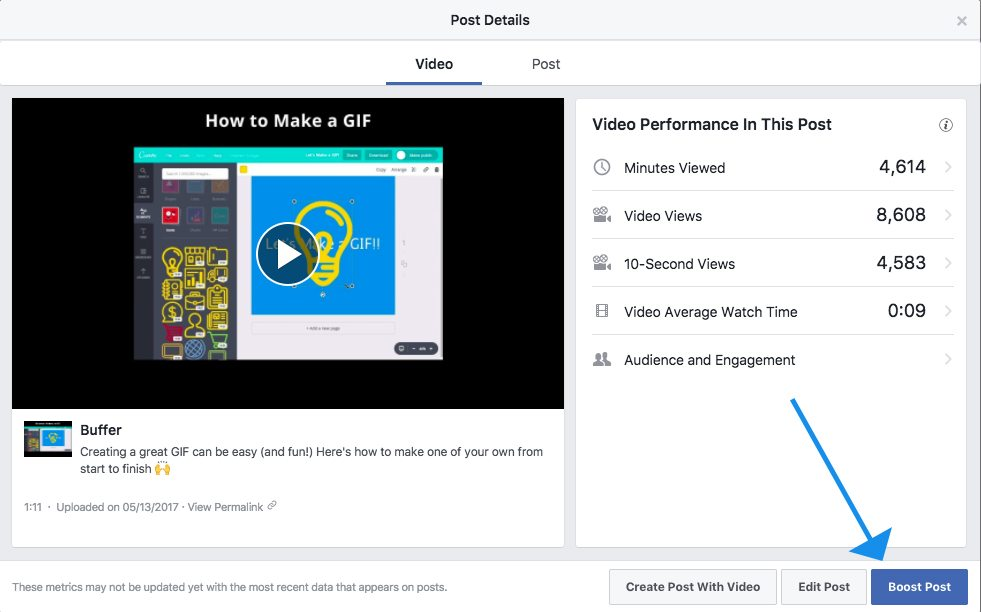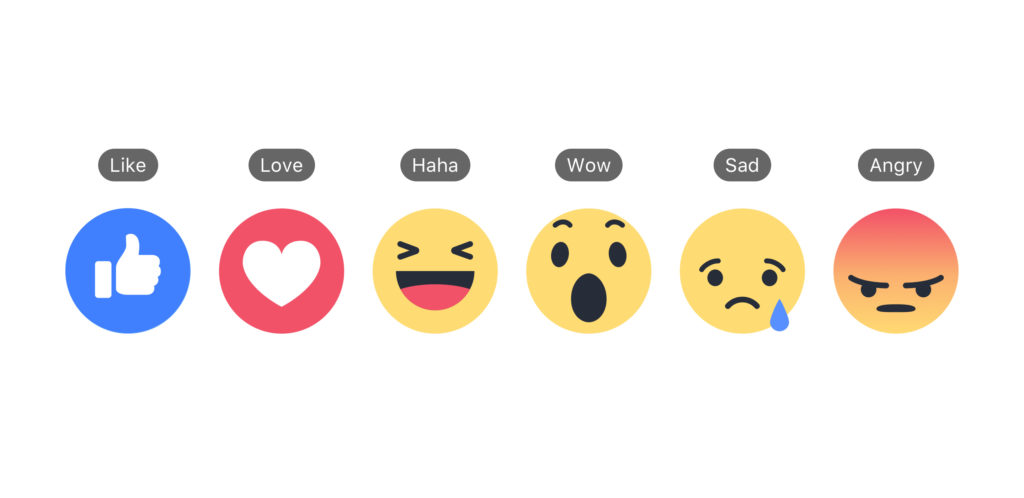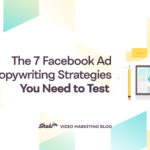Facebook is a huge ad network. As a small fish, you might fear your brand will get drowned out. If early attempts at Facebook marketing haven’t worked, do not despair. Small businesses can achieve real growth with Facebook video ads. You just need to nail down your goals, form a clear strategy, and avoid common mistakes.
We turned to an expert in the world of Facebook ads, Justin Marshall, to get some insider tips on launching successful video ads on Facebook. Justin founded Ad Hoc Media, a digital agency that helps up-and-coming businesses such as American Trench, Rivay NYC, and StyleUp develop and execute paid campaigns on social. Here are his guidelines for getting the results you want with Facebook video ads.
Forming your Facebook marketing strategy
Facebook campaigns are a science, not an art. As Justin says, “People think that they’re making a lot of subjective decisions, but they shouldn’t be.” Both your overall ads strategy and individual campaigns should be approached in a top-down, systematic way.
Justin lays out three basic things to do to structure your strategy going forward:
- Start with goals you can track
- Test the waters with organic content
- Optimize for engagement
Let’s dive a little deeper into his thoughts about each stage.
Work backwards from trackable goals
Right off the bat, Justin disputes the idea that Facebook ads are better suited to some industries over others, such as e-commerce vs. B2B SaaS. A better heuristic for determining which companies will succeed on Facebook has to do with how they define their goals.
So what types of companies should invest in Facebook ads?
JUSTIN MARSHALL: The companies that get the best use out of Facebook ads are the companies that can most easily track how well their ads are delivering their business goal. So it doesn’t necessarily matter if it’s a mining company, versus a food service company. It’s just about if they can track their goals. I think once you’ve established a goal that you can measure and you can track that with Facebook ads, you’re a good candidate for running ads.
An organic video post from American Trench, a made-in-the-USA menswear brand and one of Justin Marshall’s clients.
Test with organic content
Rather than throw a bunch of ads against the wall to see what sticks, a cheap way to find the right ad creative is to launch them as organic posts first. Content marketing and paid advertising go hand-in-hand. Your ads should fit in naturally with your organic content strategy – and your audience will respond to content that looks more authentic, even if it’s an ad.
When is the right time to start running Facebook ads?
JUSTIN: Before you start running ads, make sure that you’ve figured out your content strategy. I recommend testing your messaging and offers to organic audiences first to make sure that you’re creating content that is engaging your audience.
Once you figure out how to produce organic content that is engaging, then it’s time to amplify.
A lot of people think of Facebook ads are a magic bullet or a cure-all, but really [ads are] a way to amplify content that’s already working. So if your page posts are getting zero likes, comments, and shares, boosting every one of them with $100 probably isn’t gonna be a very good use of money.

Optimize for Engagement
Facebook changes its algorithms all the time. Right now, posts that get a lot of engagement – likes, comments, and shares – are prioritized in users’ Facebook feeds. This is true of both organic and paid content.
But wait, doesn’t Facebook hide organic content nowadays?
JUSTIN: Usually when you put up an organic post, Facebook shows it to 2% or 3%of the people who follow you. If the post is doing well and people are interacting with it positively, then Facebook shows it to more people.
I see people that spend a lot of money on a video ad, really produce it, and then show it to a cold audience, and no one’s engaging. You need to figure out what’s working before you invest all these resources into paid advertising.
If none of your organic page posts have impressions of more than 5% of your total followers, then turning that into an ad probably isn’t going to help. In that case, you need to find more engaging content before you promote it.
So you’re building an ad strategy, and you have some organic reach. What do you do next?
JUSTIN: The first step is to identify your goal, which is an action someone takes online that can be measured. Every ad’s performance will be determined by how much it costs to achieve this goal. So you can’t be just as vague as brand awareness, or, “I wanna get my name out there.”
You need to be more specific: ‘I want to get the cheapest 10-second video views from women between the ages of 25-44 in Minneapolis.’ And then the ad’s performance is judged by the cost per 10-second video view.
You really have to drill down to the one or two metrics that are representative of your business goal, otherwise the rest are just vanity metrics.
You could have great click-through rates and engagement and zero sales. So that’s the first step: figure out what your goal is because everything else is gonna be judged against that.
Executing your Facebook marketing strategy with video
To create content that’s engaging, Justin offers several suggestions that can be boiled down to the following points:
- Step away from the product videos
- Replicate brands that are storytellers
- Have other people talk about your brand for you
- Make an impact in the first few seconds
- Don’t worry about the ad type
- Don’t shy away from controversy
1. Step away from the product videos
What do most companies get wrong about social video?
JUSTIN: They get too promotional too quick. People don’t want to be sold to on social media, but they love discovering new things and eventually buying them. Now more than ever, people don’t just buy the products and services that they like, they buy into why you sell what you sell. Brands need to do a better job at communicating values, mission, what you stand for, and use video as a means to tell stories about that, rather than just showing product shots.
2. Replicate brands that are storytellers
What’s an example of a company selling more than just products in their videos?
JUSTIN: There’s a company called Brass that do women’s clothing, but instead of just talking about their pieces, they talk about how to build a wardrobe of pieces and closet tours. They really humanize it and put it in a larger context because, yes – women want to buy the clothes because they like them – but really, what they are buying into is the idea of having a more organized, productive life where you can walk into your closet and easily decide what to wear, and it’ll look good at work and after-dinner drinks. It’s just tying their products into a larger story or lifestyle.
Brass Clothing builds a story around their Facebook video content.
3. Have other people talk about your brand for you
JUSTIN: People want to know about the people who are making the products, the story behind that. One brand I was working with [made] a video, and the star of the video became this 70-year-old Italian man that was the cobbler in charge of the rivets on the shoes. That was a cool story to tell, and now people feel good buying those shoes knowing that they’re supporting this man’s career.
Enlist others to talk about your brand for you, whether that’s a happy customer, a client, or a mention in the press, or an influencer. It’s more persuasive when someone else speaks well of you than when you speak well of yourself.
4. Make an impact in the first few seconds
Do you have any specific video format recommendations?
JUSTIN: I would make sure you have some type of hook in the first three seconds, the first one second, if possible. The newsfeed is a competition for attention, and you really have to stick out.
You either have to be visually stunning or convey a powerful message through voice or text right at the start of the video.
5. Don’t worry about the ad type
Do specific ad products work for different stages of the funnel?
JUSTIN: I’ve seen all ad types work at every level of the funnel. It’s more about the specific content of the ad, so for lower down the funnel, it might be more appropriate to talk about specific item benefits of your product. Whereas, top of funnel, you might want to start with the why and the values of your brand.
6. Don’t shy away from controversy
Do you think it pays to be controversial? Does a controversial headline gets more clicks?
JUSTIN: [Controversial content is] going to drive engagement, which is going to drive organic reach, which is going to help your paid reach. A comment – or even an angry face reaction – is judged by Facebook as positive engagement, so it’s still an engagement, and it’s going to result in increased reach at better prices for your ad.

Do you think that’s something that will change with Facebook over time?
JUSTIN: I think it would be pretty hard for them to automate that without a bunch of manual human review of comments. So, for the foreseeable future, I see any comment, positive or negative, is going to be positive as far as the ad auction is concerned.
Things to watch out for
Despite Facebook’s user-friendly interface, Facebook marketing is a surprisingly technical process. Managing your tools and processes is instrumental to your success with Facebook video marketing.
Justin’s tips for steering clear of common pitfalls:
- Only use one ad per ad set
- Set automated rules carefully
- Track your ads outside of FB
Only use one ad per ad set
How can you make sure Facebook optimizes for the goals you’ve set?
JUSTIN: Say you have an ad set with a budget of $100 a day, and you have three different ads in the campaign (three different video creatives). Even if your campaign [goal] is conversion, Facebook isn’t going to spend your budget on the ad that is leading as the cheapest cost per purchase. It’s going to favor your budget towards the ad that’s getting the most engagement.
Facebook is going to spend your budget based on which ads get the most engagement, regardless of what you’ve optimized your campaign for.
Even if another ad is actually meeting your return on ad spend goals, it’s not going to get the spend if it has less engagement. To solve for this, I put only one ad in each ad set because that’s the only way that I can really be in full control of the budget.
Set automated rules carefully
When a Facebook video ad performs well, how do you optimize it for further success?
JUSTIN: When an ad is performing well, you should increase its budget. We do this through Facebook automated rules. You can create a rule, for example, that says if your cost per add to cart in the past 3 days is under $5, then increase the daily budget by 15%.
For me, the word ‘optimize’ includes tasks like split testing conversion objectives, testing new audiences, testing new creatives, and then tweaking the actual automated rules based on what you’re seeing happening on the ground.
How could this go wrong?
Maybe you want to turn an ad off, so you make a rule to turn an ad off if the return on ad spend is under your goal. Basically, you have to add a bunch of other stuff because if you just make a rule that says, ‘Turn off an ad if it has a return on ad spend of under $2 in the past 3 days,’ that would turn off every brand new ad. So you have to tweak your rule to only apply that rule when there are more than 8,000 impressions.
And then you see how that works out. Maybe that rule is letting too many underperforming ads run for too long, so you adjust that to some other variable.
Why don’t more marketers and small business owners use rules to their full potential?
People think that they’re making a lot of subjective decisions, but they shouldn’t be. People get into their ad account, and it’s disorganized. They have a bunch of stuff going on. And they say, ‘Oh, this one seems to be doing pretty well. Maybe we’ll put a little bit more money into that,’ or, ‘This one seems to be losing steam. Maybe it’s time to pause this one.’
All of those decisions need to be translated into specific rules otherwise you’re just shooting from the hip and it’s super inefficient.
When you start running larger volumes of ads or audiences or for multiple clients, you have to have those rules set up. Even if you’re implementing them all manually without automated rules, you have to have clear rules for yourself. You don’t just go in there and say, ‘This one seems to be not doing so hot. Maybe it’s time to turn it off.’ You need to ask yourself why would you turn it off, and how can you translate that into an if this, then that rule.
The automated rules lets you be really scientific about it without a bunch of manual work, you know? So everyone should get in there if they’re not already.
Track your video ads outside of Facebook
How do you track your workflow and the successes and failures of each experiment?
JUSTIN: I use a Google Sheet. I have all my audiences down the left side and all of the ads and the post IDs across the top. I make a note of when they start and when they’re turned off, and that lets me have a good, high-level view of what’s currently going on. It also makes it easier for me to repurpose old content that did really well. Say I’m turning off an ad because its performance is dipping but it did really good for like a month for us — maybe I’ll wait a month or so, and then try again. Or at some point in the future when I could use some more creative, I’ll just repurpose something that worked well before.
| Ad 1 Name + Post ID | Ad 2 Name + Post ID | Ad 3 Name + Post ID | Ad 4 Name + Post ID | Ad 5 Name + Post ID | |
| Audience 1 | start date(s)/stop date(s) | start date(s)/stop date(s) | start date(s)/stop date(s) | start date(s)/stop date(s) | start date(s)/stop date(s) |
| Audience 2 | |||||
| Audience 3 | |||||
| Audience 4 | |||||
| Audience 5 |
An example spreadsheet similar to the one Justin uses to track ad and audience data.
Be a goal-getter
To stay on top of your Facebook video ad campaigns, you have to be a goal-getter. You need to meld your organic strategy with paid, constantly create new ad sets, and think of ways to refresh older content in order to meet the expectations you set for yourself.
Don’t forget to do what looks and sounds natural to boost engagement. As Justin says, people on social media will always prefer a good story with beautiful visuals over a straight-up marketing pitch. Create authentic content to forge a connection with viewers.
With Facebook, it’s especially important to build campaigns that are platform-specific. Work within the opportunities and constraints of the platform, measure everything, and optimize each feature of your ad for your targeted Facebook audience.
The more intentional you are about it, the more successful you will be!



2 comments On What’s Missing From Your Facebook Video Ads Strategy: Interview with Justin Marshall
Pingback: What’s Missing From Your Facebook Video Ads Strategy: Interview with Justin Marshall – Next Level Digital Marketing ()
Pingback: What’s Missing From Your Facebook Video Ads Strategy: Interview with Justin Marshall – Just Internet Marketing ()
Comments are closed.